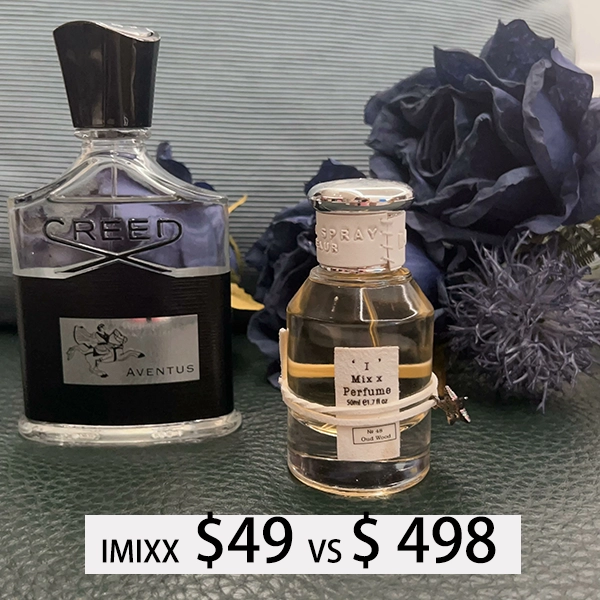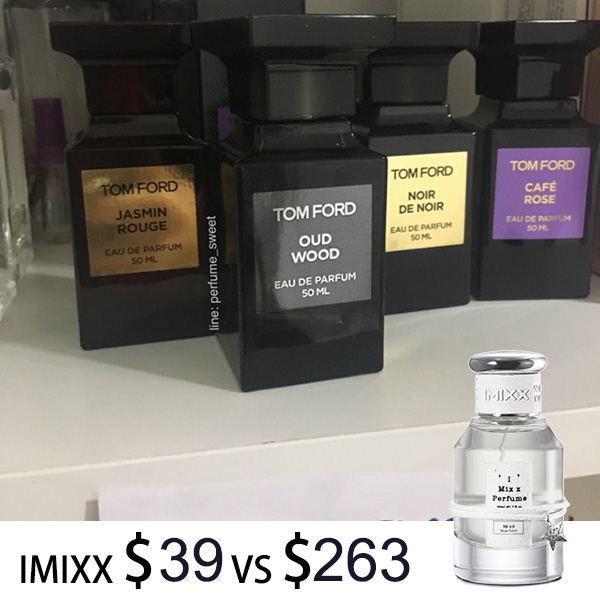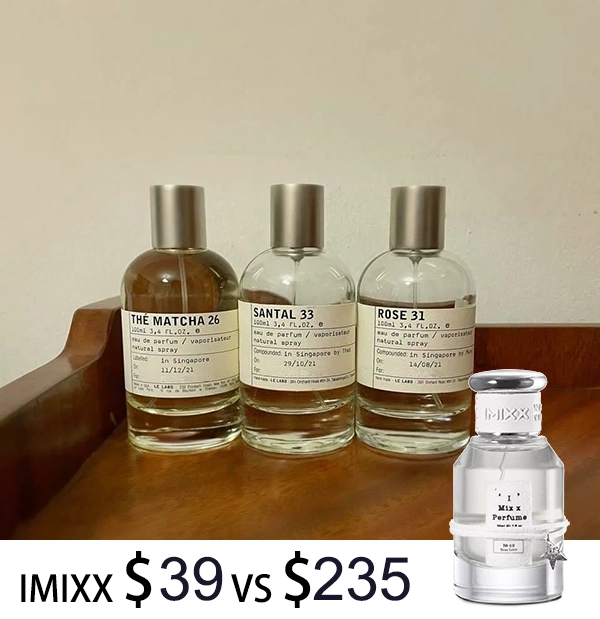What’s the Science Behind How Is Cologne Made? The question “how is cologne made” reveals a fascinating blend of science, art, and craftsmanship. From sourcing premium ingredients to creating intricate scent profiles, cologne-making involves multiple steps to deliver the perfect balance of fragrance and longevity. At IMIXX Perfumes, we take inspiration from this meticulous process to craft some of the highest-quality fragrance replicas in the USA. By replicating luxury fragrances with 99.98% accuracy, we provide affordable alternatives to some of the world’s most iconic scents.
In this in-depth guide, we’ll explore the entire process of making cologne, break down the role of its ingredients, and dive into the science behind fragrance creation. We’ll also discuss how IMIXX Perfumes bridges the gap between luxury and affordability with expertly crafted dupe perfumes.
What Are the Key Ingredients Used in Cologne?

Every cologne begins with a careful selection of ingredients. These raw materials determine the scent’s complexity, longevity, and quality.
| Category | Examples | Purpose |
|---|---|---|
| Citrus Notes | Lemon, bergamot, orange | Provide freshness and vibrancy |
| Floral Notes | Rose, jasmine, lavender | Add softness and elegance |
| Woody Notes | Sandalwood, cedarwood, vetiver | Create warmth and depth |
| Spicy Notes | Cinnamon, cardamom, nutmeg | Introduce boldness and character |
| Synthetic Compounds | Ambroxan, Iso E Super | Replicate rare or costly natural materials |
These ingredients are blended to create the top, heart, and base notes that form a cologne’s unique scent profile.
How Is Cologne Made? Step-by-Step Process
The production of cologne involves multiple stages, combining traditional techniques with modern innovations. Here’s a closer look at each step:
1. Sourcing Ingredients
High-quality ingredients are the foundation of any great cologne. Manufacturers source raw materials like essential oils, alcohol, and water from trusted suppliers. At IMIXX, we partner with renowned fragrance-producing regions like Grasse, France, to ensure premium quality.
2. Creating the Scent Profile
Colognes are designed with a three-layer structure:
- Top Notes: The initial impression, typically light and fleeting (e.g., citrus or herbal).
- Heart Notes: The core of the fragrance, lasting longer and adding depth (e.g., floral or spicy).
- Base Notes: The foundation, providing longevity and richness (e.g., woody or musky tones).
3. Blending and Aging
After ingredients are selected, they are blended in precise proportions. The mixture is aged for weeks or even months to allow the ingredients to harmonize fully, resulting in a well-rounded fragrance.
4. Dilution and Filtering
The fragrance concentrate is diluted with alcohol and water to achieve the desired strength (e.g., Eau de Cologne or Eau de Toilette). The solution is then filtered to remove impurities, ensuring clarity and smoothness.
5. Bottling and Packaging
The final cologne is carefully bottled and packaged, with designs that reflect its quality and sophistication.
How Long Does It Take to Produce Cologne?
The time required to produce cologne varies significantly based on the complexity of the fragrance, the quality of ingredients, and the production process involved. While simpler cologne formulas can be completed in a matter of weeks, more intricate and layered fragrances often demand months of aging and refinement to achieve their full potential. Here’s a breakdown of the timeline involved in creating a high-quality cologne:
1. Ingredient Sourcing and Preparation (1-2 Weeks)
The process begins with sourcing premium-quality ingredients. This includes natural extracts like essential oils from flowers, fruits, and woods, as well as synthetic compounds that replicate rare or expensive materials. Ingredients must be carefully inspected for purity and quality to ensure consistency in the final product.
- Example: Extracting pure sandalwood oil, a common base note in colognes, can take weeks as it requires a meticulous distillation process.
2. Blending the Fragrance Notes (2-4 Weeks)
Once the ingredients are prepared, perfumers begin blending the fragrance’s top, heart, and base notes. This step requires precision to ensure the balance between these layers is harmonious. The fragrance must convey the desired profile while maintaining a smooth transition between its layers.
- Top Notes: Immediate scents like citrus and mint (last 10-15 minutes).
- Heart Notes: Floral or spicy scents that define the fragrance’s character (last 1-3 hours).
- Base Notes: Rich, lingering scents like amber or musk (last 4-8 hours).
3. Aging and Harmonization (4 Weeks to Several Months)
After the fragrance blend is complete, the mixture is left to age. Aging is a critical step that allows the components to harmonize and develop a smoother, more refined scent. This step eliminates any harsh edges in the formula, ensuring that the fragrance evolves seamlessly when applied.
- Why Aging Matters: Aging deepens the complexity of the cologne, allowing each layer of notes to shine while contributing to the overall fragrance balance. Luxury colognes often age for 6-12 months to achieve optimal results.
4. Dilution and Filtration (1-2 Weeks)
The aged fragrance concentrate is diluted with alcohol and distilled water to achieve the desired strength (e.g., Eau de Cologne or Eau de Toilette). The dilution process must be precise to ensure that the fragrance retains its intended profile while meeting safety and performance standards.
- Filtration: After dilution, the mixture is filtered to remove any impurities, resulting in a clear, polished final product.
5. Bottling and Packaging (1-2 Weeks)
The final step involves bottling the cologne in high-quality containers designed to protect its integrity and maintain freshness. Luxury brands often invest in sophisticated packaging to reflect the elegance of the fragrance inside.
Time Comparison: Simple vs. Complex Colognes
| Fragrance Type | Production Time | Example |
|---|---|---|
| Simple Formulas | 4-6 weeks | Light citrus or single-note colognes |
| Layered Luxury Colognes | 6-12 months | Complex blends like Creed Aventus or Tom Ford Oud Wood |
Why Does Aging Improve the Quality of Cologne?

Aging allows the volatile compounds in the fragrance to settle and harmonize, creating a smoother and more cohesive scent. It also enhances the longevity of the fragrance on the skin and ensures that no single note overpowers the others. This is why luxury colognes, such as those replicated by IMIXX Perfumes, are often aged meticulously to deliver a refined experience.
IMIXX replicates this level of precision and care, offering dupe perfumes and fragrance clones that rival the complexity and richness of high-end originals. Visit IMIXX Perfumes to explore cologne replicas crafted with the same attention to detail as the luxury scents they emulate.
Why Choose IMIXX Perfumes for Cologne Replicas?
At IMIXX Perfumes, we specialize in creating dupe perfumes that capture the essence of luxury fragrances at a fraction of the cost. Here’s what sets us apart:
- Unmatched Accuracy: Our fragrances replicate the originals with 99.98% precision.
- Sustainable Practices: We use eco-friendly methods to preserve the purity of natural ingredients.
- Affordability: Enjoy the best fragrance scent experience without the premium price tag.
- Wide Selection: From Creed Aventus to Le Labo Santal 33, explore our range of cologne replicas at IMIXX Perfumes.
FAQs About How Is Cologne Made
1. What ingredients are used to make cologne?
Cologne contains essential oils, alcohol, water, and sometimes synthetic compounds like Ambroxan to replicate rare or expensive materials. Common ingredients include citrus, florals, woods, and spices.
2. How is cologne different from perfume?
Cologne has a lower concentration of essential oils (2-5%), making it lighter and fresher than perfume, which contains 15-30% oils for a richer, longer-lasting scent.
3. What is the process of making cologne?
Making cologne involves sourcing high-quality ingredients, blending top, middle, and base notes, aging the mixture, diluting it with alcohol and water, filtering impurities, and packaging the final product.
4. How long does it take to make cologne?
The time required to make cologne can range from a few weeks to several months. Aging is an essential step to allow the fragrance components to harmonize fully.
5. Can cologne be made at home?
Yes, cologne can be made at home with essential oils, alcohol, and distilled water. However, achieving professional-grade quality requires precise blending techniques and high-quality ingredients.
6. What are the top notes in cologne?
Top notes are the first scents you smell when applying cologne, such as citrus, mint, or lavender. They are light, refreshing, and typically fade within 10-15 minutes.
7. How do manufacturers ensure the quality of cologne?
Manufacturers ensure quality by sourcing premium ingredients, adhering to strict production standards, and conducting rigorous testing for safety, stability, and consistency.
8. What is the role of alcohol in cologne?
Alcohol acts as a carrier for the fragrance oils, helping the scent disperse evenly and evaporate properly on the skin. It also stabilizes the mixture and enhances the fragrance’s longevity.
9. How has cologne production evolved over time?
Cologne production has evolved from simple citrus-based formulas in the 18th century to today’s complex fragrances, which blend both natural and synthetic ingredients for greater versatility and sustainability.
10. How do natural and synthetic ingredients differ in cologne?
Natural ingredients are derived from organic sources like plants and flowers, while synthetic ingredients are lab-created to mimic or enhance natural scents. Both play a role in creating balanced and long-lasting fragrances.
11. What are the environmental impacts of cologne production?
Cologne production can have environmental impacts if natural ingredients are overharvested. Sustainable practices, such as eco-friendly extraction and synthetic alternatives, help minimize harm to the environment.
12. What are the safety regulations in cologne manufacturing?
Cologne manufacturing is regulated by organizations like IFRA (International Fragrance Association), which sets guidelines to ensure products are safe for skin use and meet environmental standards.
Recommended Cologne Replicas at IMIXX Perfumes

Here are some of the most popular cologne replicas crafted by IMIXX Perfumes:
- Creed Aventus (Replica)
- A bold and fresh fragrance featuring pineapple, birch, and musk. Perfect for formal events or business settings.
- Le Labo Santal 33 (Replica)
- A woody, modern scent with sandalwood and papyrus. Ideal for casual outings or artistic environments.
- Tom Ford Oud Wood (Replica)
- Exotic and rich, with notes of oud, cardamom, and amber. Best for evening wear or romantic occasions.
Browse the full collection at IMIXX Perfumes to find your perfect match.
Conclusion: The Art and Science of Cologne-Making
Understanding how cologne is made provides a deeper appreciation for the craftsmanship behind every bottle. From sourcing premium ingredients to creating intricate scent profiles, each step plays a vital role in the final product. At IMIXX Perfumes, we celebrate this artistry by offering high-quality fragrance replicas that bring luxury within reach.
Discover your new signature scent at IMIXX Perfumes and experience the perfect blend of sophistication, quality, and affordability. Whether you’re looking for a classic favorite or exploring new options, IMIXX ensures that luxury scents are accessible to everyone.

